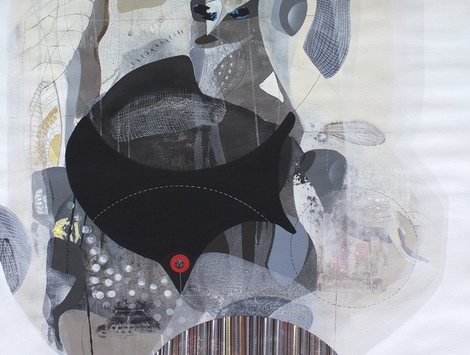Full Description
(Courtesy of Charles Krause/Reporting Fine Art)
Work metadata
- Year Created: 2012
- Submitted to ArtBase: Monday Nov 5th, 2012
- Original Url: http://www.joanbelmar.com/
-
Work Credits:
- Joan Belmar, primary creator
Take full advantage of the ArtBase by Becoming a Member
Artist Statement
The Tierra del Fuego series is inspired by the traditional coming of age initiation ceremony once held by the Selk’nam people from Tirerra del Fuego, a group of islands between Chile and Argentina. The Selk’nam became extinct in 1966 and what we know about them and their rituals comes from photographs taken many years before by Martin Gusinde in 1923.
Body paint (Dots and lines) were an essential part of their life. They had designs for hunting, war, peace meetings and shamanistic performances. My series is inspired by these designs. The crackling texture of these pieces seeks to reflect the hostile climate and conditions of the geographic region where the Selk’nam lived. My work on this series made me think about how politics, modernization and human greed affected the life of people to the point of annihilating them.
Comments
-
Joan Belmar | 11 years, 5 months ago

The Washington Post
The “America” paintings and a more recent series, “Tierra del Fuego,” are making their debut at Charles Krause/Reporting Fine Art. The newer work can be seen as more pointed, since it’s about the destruction of an indigenous people, the Selk’nam, who lived on the southern island divided between Chile and Argentina. Working from photographs taken in the 1920s, Belmar takes the dots and lines of the tribe’s body paint as visual motifs in paintings that (like the earlier ones) are mainly nonrepresentational. The artist boldly contrasts strong, clean black forms with areas of mottled, dripped tan and brown, evoking both the Selk’nam and the land where they once lived. Such pieces as “Reforma #1” are evocative but also powerful as sheer design.